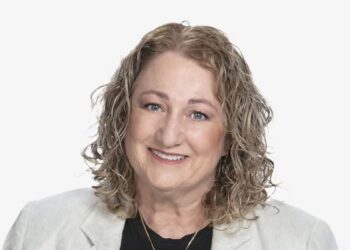Terence Wong, senior associate at Sladen Legal, noted that the decision in Gainer Associates Pty Limited [2024] NSWSC 1138 advised upholding the SMSF trustee’s choice to allocate one-third of the death benefits to the spouse of the sole surviving member and the remaining two-thirds to the member’s estate.
The facts of the case centred around a husband and wife, with no children, who established an SMSF before the husband died, leaving the wife as the sole member and director of the corporate trustee of the SMSF.
Within a few months of the husband’s death, the wife met a lawyer from the US who specialised in estates, trusts, and family wealth planning on a cruise ship where he was conducting courses on wealth and inheritance planning. The lawyer and the wife then maintained a de facto relationship for several years.
The wife had attempted to implement a binding death benefit nomination a week before her passing, with 100 per cent of her member balance to pass to her legal personal representative, which was held to be invalid as it had only been witnessed by a single witness when two were required.
The court heard that NSW Trustee and Guardian (NSWTG) was the executor of her estate.
“However, as an entity, NSWTG could not become director of the SMSF corporate trustee, only its shareholder,” Wong said.
“It also declined to become the trustee of the SMSF. NSWTG, therefore, engaged a chartered accountant and registered liquidator, Mr Heesh, to administer and wind up the SMSF and act as its sole director.”
Despite being gifted under the will a Lexus car, an art collection, a right to occupy a house, and $1 million, the lawyer disputed several aspects of the SMSF, including the decision of the trustee to pay a third (around $2.3 million) to the lawyer, with the remaining two-thirds of the estate ($4.6 million) to be paid to the deceased’s legal personal representative.
Wong said Heesh was concerned that his role was not in compliance with section 17A of the Superannuation Industry (Supervision) Act 1993 (SIS Act) because he was not the legal personal representative of the sole deceased member nor her relative and that he sought to be remunerated for his role.
Wong continued that Heesh obtained an indemnity letter from the Australian Taxation Office stating that it would consider the circumstances and not issue a notice that the SMSF was non-compliant as long as the fund was wound up by 29 November 2024 or an extension was sought.
“Mr Heesh sought legal advice and commenced an extensive claim staking procedure and received information and submissions from NSWTG (as executor of the deceased estate) and partner. He also had extensive communications with the spouse via their respective lawyers,” he said.
Wong continued that as a result of various allegations and communications with the spouse’s lawyers and as a result of legal advice, the SMSF trustee decided to apply to the NSW Supreme Court for legal advice on several issues, including the death benefit decision, defending removal proceedings, and varying the fund trust deed.
Heesh also wanted clarification from the court on whether a director could be remunerated and whether the trustee could be indemnified.
Matthew Burgess, director of View Legal, said the court confirmed that despite separate proceedings challenging the estate, it was able to resolve the issues that had arisen in relation to the SMSF.
In its ruling, the court stated that both the Superannuation (Industry) Supervision Act 1993 (SIS Act – see section 17A(3)) and the trust deed of the fund confirmed that for an SMSF to maintain compliance and its concessional tax treatment following death of a member, the member’s legal personal representative must either be appointed as trustee of the SMSF or a director of the trustee company;
“Here, the trustee of the estate (and therefore the member’s legal personal representative) was the NSWTG, and it refused to act as trustee of the SMSF and could not be appointed as director, as only individuals can act as directors, instead appointing an accountant and liquidator as director of the trustee company,” Burgess said.
“This approach breached the SIS Act and trust deed and left the SMSF at risk of the ATO issuing a notice of non-compliance, making the fund liable for tax at top-marginal rates. As well, both the SIS Act (see section 17(A)(2)) and the trust deed prohibited any director of the trustee company from receiving remuneration for duties or services performed by the director in relation to the SMSF.”
Burgess noted that there is an exception under section 17B of the SIS Act where a director holds professional qualifications and is undertaking work for the SMSF in their professional capacity (see Re Application of Ellasil [2023] VSC 69), which confirmed that “the mischief of the prohibition is to ensure that remuneration is not used by trustees to obtain access to their superannuation benefits before they are eligible”.
“While each of the above issues was important, the fact that the ATO, following a request by the NSWTG, had issued a letter of indemnity to NSWTG (and any party lawfully authorised by NSWTG ), agreeing not to pursue it for any continuing breaches of the SIS Act, a pathway was provided for the court to achieve a pragmatic outcome, particularly given the court could not simply appoint a new trustee to remedy the breach of the SIS Act,” Burgess said.
“In particular, given the concessions granted by the ATO concerning the failure to have the legal personal representative appointed as a director of the trustee company, the ongoing breach was unlikely to expose the beneficiaries of the SMSF to the depletion of assets which may otherwise result from the loss of concessional tax treatment.”
Burgess said in relation to a series of other challenges by the aggrieved de facto, the court confirmed it is not the court’s role to assess the fairness or reasonableness of a trustee’s decision, unless the trustee’s discretion is so extreme and without any justification that it can be described as “grotesquely unreasonable”.
“If that was the case, the decision itself may form part of the evidence to prove the discretion was not properly exercised (see Wareham v Marsella (2020) 61 VR 262 and Owies v JJE Nominees Pty Ltd [2022] VSCA 142),” he said.
The court also ruled that neither the legislation nor the case law imposes an obligation to consider a dependant in priority to the estate.
“Any priority a trustee may give in this regard is a matter that depends on the particular circumstances which confront the trustee, including the terms of the trust deed (see Wan v BT Funds Management Ltd [2022] FCA 302),” Burgess said.
“The ruling also noted that a trustee is not required to provide reasons for its decision; however, non-disclosure of the trustee’s reasons does not mean that the exercise of discretion cannot be reviewed (see Karger v Paul [1984] VicRp 13 and Maciejewski v Telstra Super Pty Ltd [1999] NSWSC 341).”
Additionally, the court stated that the extent of a trustee’s duty to properly inform itself of the facts to give real and genuine consideration to the exercise of discretion depends on the particular circumstances, including the nature of the trust and the duty of trustees to properly inform themselves.
He added this is more intense in superannuation funds, compared to, for example, discretionary trusts with a broad class of potential beneficiaries (see Owies v JJE Nominees Pty Ltd [2022] VSCA 142 and Finch v Telstra Super Pty Ltd [2010] HCA 36).
“Here, the evidence was that the trustee properly exercised its discretion, including obtaining legal advice to understand and comply with its obligations and the terms of the trust deed, contacting eligible recipients, and seeking full information about their circumstances for consideration,” Burgess said.
“In this case, this was demonstrated to the extent that the accountant’s timesheets indicated that he turned his mind to the decision repeatedly and, indeed, appeared to have agonised in coming to the proposed decision. This meant the trustee had given the required ‘real and genuine consideration’.”
He added that the fact that the de facto could have received the whole of the death benefit tax-free (as a tax dependant) was not, in itself, a good reason for the trustee to distribute 100 per cent of the benefit to the de facto.
“Around two-thirds of the accountant’s work fell within the section 17B SIS Act exemption of being work for the SMSF in a professional capacity,” he said.
“While strictly the balance of the work could not be paid by either the SMSF or the estate without making the fund non-compliant, given reasonable steps had been taken to ensure that the non-compliance would not result in the loss of concessional tax treatment, the balance of the fees were also able to be paid from the SMSF. Furthermore, the trustee was also entitled to be indemnified from the assets of the SMSF to the extent of any other shortfall.”


